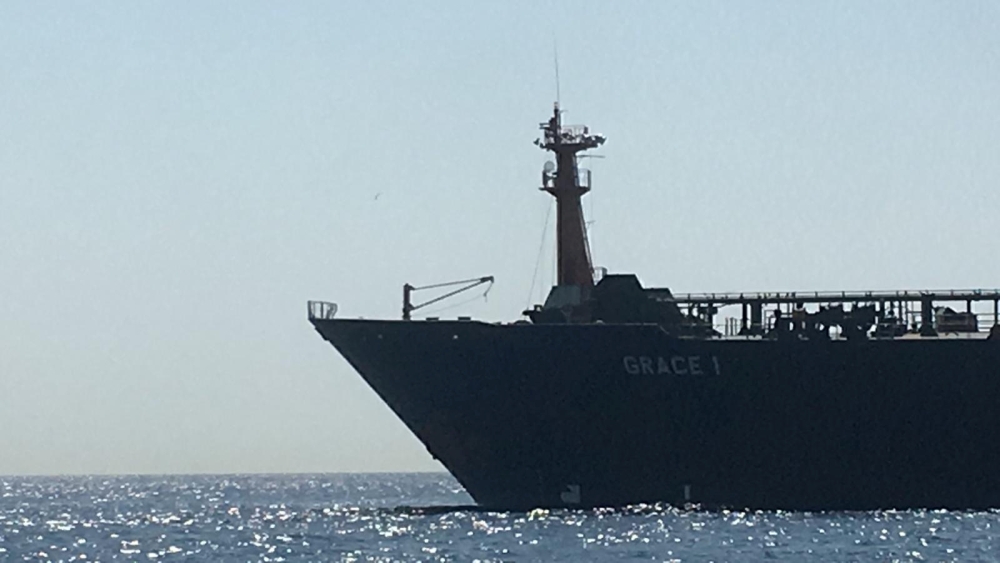
Gibraltar said on Thursday it had detained the supertanker Grace 1 on suspicion of carrying crude oil to Syria in what a legal source said may be the first such interception under EU sanctions.
Refinitiv Eikon mapping indicates the Grace 1 loaded Iranian crude oil on April 17, and if this were confirmed, the attempted delivery to Syria could also be a violation of U.S. sanctions on Iranian oil exports.
European Union sanctions against the government of Syria took effect in May 2011, shortly after the start of President Bashar al-Assad’s bloody crackdown on pro-democracy demonstrators that mushroomed into a protracted civil war.
Iran, a close ally of Assad, is also under a U.S. sanctions regime meant to bar all international sales of Iranian oil, imposed after President Donald Trump withdrew Washington last year from world powers’ 2015 nuclear deal with Tehran.
In a statement, the Gibraltar government said it had reasonable grounds to believe that the Grace 1 was carrying its shipment of crude oil to the Banyas refinery in Syria.
“That refinery is the property of an entity that is subject to European Union sanctions against Syria,” Gibraltar Chief Minister Fabian Picardo said. “With my consent, our port and law enforcement agencies sought the assistance of the Royal Marines in carrying out this operation.”
Government-controlled areas of Syria suffered acute fuel shortages earlier this year resulting from what Assad described as an economic siege. In May, Syria received its first foreign oil supplies for six months with the arrival of two shipments including one from Iran, a source familiar with the shipment said at the time.
The Gibraltar government published regulations on Wednesday to enforce the sanctions against the tanker and its cargo.
A British Foreign Office spokesman said: “We welcome this firm action by the Gibraltarian authorities, acting to enforce the EU Syria Sanctions regime.”
Earlier this year, Reuters revealed how the Grace 1 was one of four tankers involved in shipping Iranian fuel oil to Singapore and China, in violation of U.S. sanctions.
The Refinitiv Eikon mapping data shows the Grace 1 sailed a longer route to the mouth of the Mediterranean around the southern tip of Africa instead of via Egypt’s Suez Canal.
The tanker was documented as loading fuel oil in Iraq in December, though the Iraqi port did not list it as being in port and its tracking system was switched off. The tanker then reappeared on tracking maps near Iran’s port of Bandar Assaluyeh, fully loaded.
Shipping data indicates the ship is a 300,000-tonne, Panamanian-flagged tanker managed by Singapore-based IShips Management Pte Ltd.
Iran has accused the Trump administration of waging “economic war” against it with a campaign to reduce Iranian oil exports to zero, following the U.S. pullout from a global nuclear deal that Trump said was dangerously flawed in Tehran’s favour.
Iranian crude exports were around 300,000 barrels per day or less in late June, industry sources said, a fraction of the more than 2.5 million bpd Iran shipped in April 2018, the month before Trump withdrew from the nuclear deal.
Iran has vowed to breach the accord’s curbs on its uranium enrichment capacity one by one until it is able to sell that amount of oil again. Tehran says this is the least it should be able to expect from a deal that offered economic gains in exchange for nuclear limits.
Fears of war have risen as the U.S.-Iranian stand-off – with Iran refusing to be pushed into negotiations on stricter limits to its nuclear activity and regional behaviour – have led to attacks on several oil tankers in the Gulf, Iran’s shooting downing of a U.S. military surveillance drone, and planned U.S. air strikes on Iran called off by Trump at the last minute.
Source: Reuters
